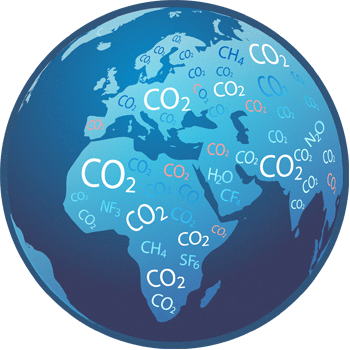Bioenergy is the renewable energy produced by living
organisms (Dictionary). This type of energy is becoming a growing popularity
throughout the world in an effort to reduce environmental impacts and save our
world. However, there is a continual
controversy whether bioenergy is the answer to our environmental problems or if
it only makes the problems worse. In this blog we will be discussing positive
and negative impacts of using wood as a source of electricity.
Yes, Bioenergy is the Answer!
Furthermore,
wood is carbon neutral which means that it stores carbon and sequesters it
while the tree is growing. This means
that it does not contribute to the greenhouse effect and global warming except
for the emissions during transportation and harvesting. Also, the use of wood as energy greatly
reduced waste pollution since the ashes can be used as fertilizer or composed back
into the soil with not harm due to the natural material (Why Use Wood Energy?).
Supplementing
wood as an energy source also provides economic benefits. Wood is much cheaper product to use compared
to many fossil fuels to provide energy.
It also provides many economic benefits when discussing waste management. Since the waste can be used easily and safely
composed, the waste is much less expensive to dispose of (Why Use Wood Energy?)
No, Bioenergy Does Not Make a Difference!
As there
are many benefits to exchanging wood as an energy source, we must also consider
the negative effects. Pollution is not eliminated when considering wood. Pollution
can still occur when the wood is burned to create the energy. As trees are
considered carbon neutral, that carbon sequestered in the trees is released
when the wood is burned. The trees are not producing more carbon, but they are
not eliminating it either (Majaya).
Another
drawback of using wood as an energy source is the particle emission. If not completely combusted, it can cause
major environmental issues and emit particles into the air. Smog is a result of these particles being
released from wood and other fossil fuels as well (Wood Energy).
In conclusion,
there are both benefits and disadvantages of using wood as an energy source. It is as controversial topic as to if this bioenergy
is beneficial or not, but it is important to look at both sides of the issue.
With environmental issues greatly affecting our world, we must look for a change,
but is bioenergy the answer?
“Dictionary.com.” Dictionary.com,
Dictionary.com, https://www.dictionary.com/.
Bioenergy KDF, https://bioenergykdf.net/billionton2016/overview.
Majaya, Rachel, et al. “Advantages and Disadvantages of Wood
as a Source of Energy.” Free ZIMSEC & Cambridge Revision Notes
& Past Exam Papers, 29 Mar. 2017, https://revision.co.zw/advantages-disadvantages-wood-source-energy/.
“Why Use Wood Energy?” EECA Business, https://www.eecabusiness.govt.nz/technologies/renewable-energy/wood-energy/why-use-wood-energy/.
“Wood Energy
Issues.” EECA Business, https://www.eecabusiness.govt.nz/technologies/renewable-energy/wood-energy/how-to-use-wood-as-energy/wood-energy-issues/.
“Yale
University.” Forests & Bioenergy | Global Forest Atlas, https://globalforestatlas.yale.edu/forest-use-logging/forests-bioenergy.

